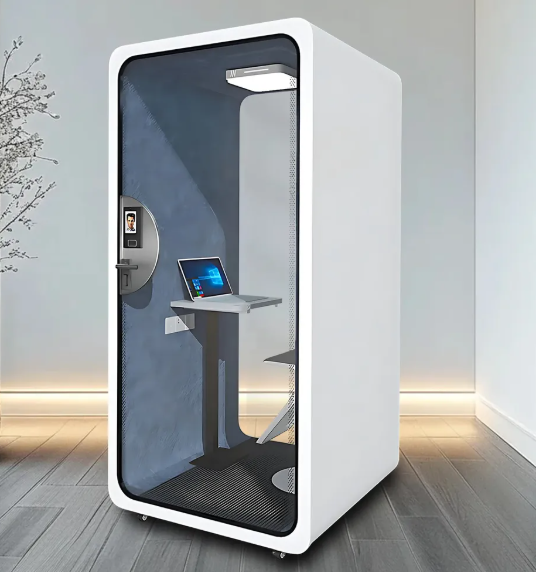The relentless hum of city traffic, the distracting chatter from a nearby conversation, the constant drone of an air conditioner—unwanted noise is an ever-present reality of modern life. While headphones with active noise cancellation (ANC) have become a popular personal solution, the quest for quiet often extends to our entire environment. This is where the cutting-edge field of noise-cancelling technology for rooms comes into play, promising to transform our living and working spaces into serene sanctuaries of silence.
But how do you cancel noise in an entire room? The principle, known as Active Noise Control (ANC), is a fascinating application of physics, though its implementation at a room scale is far more complex than in headphones.
The noise-cancelling technology for rooms, Core Science: Destructive Interference
At its heart, all ANC technology works on the principle of destructive interference. Sound travels in waves. The ingenious idea behind ANC is to generate a "counter-wave" or "anti-noise" that is the exact mirror image (i.e., 180 degrees out of phase) of the unwanted sound wave. When these two waves meet, they cancel each other out, resulting in silence—or a significant reduction in perceived noise.
This is relatively straightforward inside the sealed chamber of a headphone ear cup. A microphone picks up the incoming noise, a processor calculates the necessary anti-noise in real-time, and a speaker plays it directly into your ear. The environment is controlled and predictable.
Scaling Up: The Challenges of a Room
Applying this principle to an entire room is a monumental engineering challenge. Why?
1. Three-Dimensional Space: A room is a large, complex 3D environment with reflective surfaces (walls, windows, furniture). Sound waves bounce around, creating a complex sound field. Noise-canceling technology for rooms effectively in one spot might do very little just a few feet away.
2. Multiple Noise Sources: Unlike headphones targeting a single direction of noise, a room has multiple sound sources from different locations (e.g., traffic outside a window, a fan in the corner, people talking).
3. Real-Time Processing: The noise-cancelling technology for the room's system must analyze noise and generate anti-noise almost instantaneously. The speed of sound means any lag in processing would result in the anti-noise arriving too late, potentially even amplifying the problem.
How Room-Level ANC Systems Work
Despite these challenges, systems do exist. They typically involve a more sophisticated setup:
Reference Microphones: These are placed strategically (e.g., near windows or air vents) to pick up the incoming unwanted noise *before* it spreads throughout the room. This gives the system a crucial few milliseconds to react.
A Central Processing Unit: This is the brain of the operation. It analyzes the sound from the reference microphones, calculates the precise anti-noise signal needed, and accounts for the room's acoustics.
An Array of Output Speakers: Multiple "anti-noise" speakers are placed around the room (often in the ceiling or walls). These speakers broadcast the calculated counter-sound waves to create zones of quietness. The placement and calibration of these speakers are critical for effective cancellation across a wider area.
Current Applications and Realistic Expectations
Currently, true room-wide ANC is not a common consumer product you can buy off the shelf. Its applications are mostly found in specialized, high-value scenarios:
High-End Home Theaters: To create an absolutely pure audio listening environment free from low-frequency rumbles.
Executive Offices and Recording Studios: Where confidentiality and sound purity are paramount.
HVAC and Machinery Enclosures: Systems are built directly into ductwork or around large equipment to dampen the low-frequency drone they produce.
Automotive and Aviation: Luxury car manufacturers and jet designers use ANC systems built into the cabin's frame to cancel out engine and road noise for passengers.
For the average consumer, the most accessible form of "noise cancelling technology for rooms" is still passive soundproofing—using dense materials (acoustic panels, heavy curtains, sealed doors) to block sound from entering or reflecting. However, hybrid systems are emerging.
Consumer-focused products like soundproofing panels and smart speakers are beginning to explore this space. For instance, some developers are experimenting with using a distributed array of smart speakers (like those from Sonos or Apple) with built-in mics to potentially create localized zones of cancellation, though this technology is still in its infancy.
The Future of Quiet
The future of room noise cancellation is incredibly promising. Advances in machine learning and AI will lead to processors that can faster and more accurately model a room's acoustic profile and adapt to changing noise conditions. We can expect the technology to become more affordable and integrated into smart home systems.
Imagine a future where you can press a "quiet button" on your wall, and the cacophony of the outside world simply fades away, allowing you to focus, relax, or sleep in profound peace. Noise-cancelling technology for rooms is the key to unlocking that future, turning the dream of a personalized oasis of silence into an achievable reality.
Creating Your Own Oasis of Silence: A Deep Dive into noise-cancelling technology for rooms
